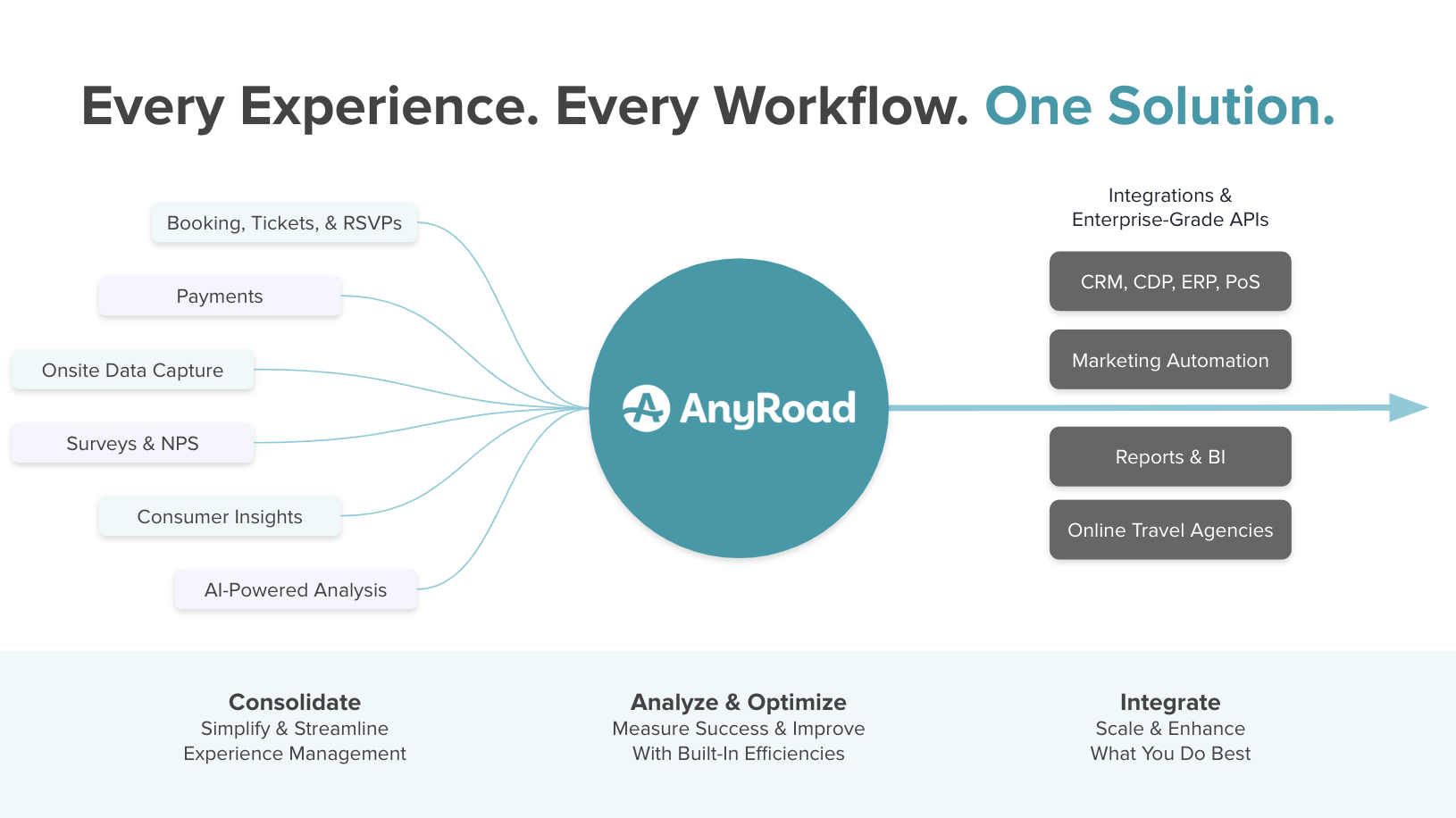5 Tips to Uplevel Your Experiential Marketing, From Execs Who've Been There
It’s no secret that we’re living in an experience-driven world. The vast majority of consumers value experiences over ‘things’, making delivering unforgettable brand experiences critical to winning the hearts and minds of your target audience.
From interactive activations in the community to immersive experiences in your properties, brands are constantly seeking new ways to connect on a deeper level with their audiences. But, how can you ensure that your experiential marketing leaves a positive, lasting impact? We’ve gathered insights from top executives who have successfully navigated the challenges of experiential marketing today.
Here are five key tips to uplevel your experiential marketing.
1. Be True to Your Brand
In a world overflowing with marketing messages, the most powerful tool at your disposal is your brand’s unique story. Staying true to your brand identity and core values leads to more genuine connections with your consumers. Experiential teams don’t need to jump on every new trend that surfaces to win over consumers; they instead need to focus on tapping into the magic that their brand already possesses.
“At the end of the day, every single brand has magic and a story you need to bring to life. You have to think about how you depict it and project that story,” says Daniel Cruz, Global Head of Commercial, Luxury Portfolio at Diageo.
Our Advice: Before designing any event or experience, start with your brand's core values. Make sure that every experience authentically reflects your brand and design with your values at the heart of each event.
2. Stay Curious
To create fresh, exciting experiences that result in greater awareness and loyalty for your brand, you have to think outside the box and stay ahead of consumer expectations. Sometimes this is easier said than done. But, innovation is often born out of curiosity. That means staying open to new ideas, technologies, and ways of engaging with consumers will help set you apart from the competition and build long-lasting relationships with your audience.
“Do something different to capture consumer attention. Remain curious at the same rate as consumer curiosity,” advises Joanna Hobday, CEO of Brite Management.
Our Advice: Encourage a culture of curiosity within your team and across the teams you collaborate with to deliver your events and experiences. Set aside time in the hustle and bustle of your days to brainstorm new ideas together or seek out inspiration from other industries.
3. Invest in the Right Tech
While creating a compelling experience is essential, none of it matters if the technology underpinning it fails. Investing in the right tools can not only work wonders for driving efficiency internally while planning and preparing for your event, but technology also plays a crucial role in ensuring that your event runs smoothly and your consumers have a seamless interaction with your brand every step of the way.
“The main thing we care about is that the event goes smoothly. You don’t want people talking about the weather while they wait for the tech to catch up,” says Chris Silver, former CIO at Estee Lauder Companies.
Our Advice: When thinking about your experiential strategy, prioritize technology that can support the end-to-end event experience – from the tools your team needs to plan and manage events internally, to those that deliver a more seamless experience to your attendees. Invest in making sure all of your teams are properly trained on your tech; test everything well in advance to avoid hiccups.
4. Be Authentic
In the age of social media and sharing very curated views widely online, consumers are quick to spot inauthenticity. Today’s audiences crave real, transparent, and authentic interaction with the brands they love. They want to feel like a part of your journey and to engage with brands that align with their values. Authenticity not only builds trust but also fosters a deeper emotional connection that will benefit your brand in the long run.
“Audiences are discerning. They want authenticity and to feel like they are part of the story with a brand,” shares Peter Lewis, Chief Partnerships Officer at SXSW.
Our Advice: Authenticity starts from within. Make sure that every event and experience aligns with your company culture and the values your brand embodies. Immerse your audience into your brand's narrative; bring your unique brand to life through your approach to experiential.
5. Know Your Consumers
Finally, it’s impossible to create deep and lasting connections with your consumers if you don’t understand them. Effective experiential marketing isn’t about pushing products; it’s about meeting your audience where they are and delivering an experience that resonates with them. And, you can’t do this without knowing who they are, what they value, and where they spend their time.
“Experiential marketing is about meeting the customer, especially a new customer, in a context where they will be,” explains Vivienne Long, former Chief Marketing Officer at REI Co-Op.
Our Advice: Take the time to research and understand your audience. And, take advantage of every opportunity you have to learn more about them. Events and experiences offer an amazing opportunity to gather more data about your audience, so don’t sleep on the opportunity. Use insights and data to tailor your brand experiences to their preferences and behaviors.
Now, on to More Impactful Experiential Marketing
Elevating your brand experiences is about balancing creativity with authenticity, technology with storytelling, and curiosity with consumer understanding. By staying true to your brand, keeping an open mind, and embracing your audience’s needs, you can create experiences that not only capture attention but build long-lasting connections.
Leaders who have been there can offer invaluable wisdom — take these tips into your next strategy session and start seeing the impact on how your experiential marketing performs.
Want more insights like these? Check out our Experience Exec newsletter on LinkedIn for more experiential marketing advice from leaders who have been there.


.png)



%2012.57.51%E2%80%AFa.m..png)
